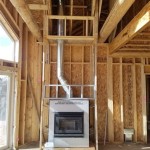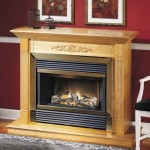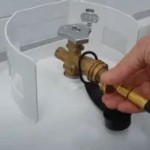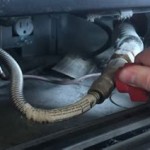Custom Gas Fireplaces: Design, Functionality, and Installation
Custom gas fireplaces represent a significant upgrade over standard prefabricated units, offering homeowners an opportunity to integrate personalized design elements with the convenience and efficiency of gas fuel. Unlike their generic counterparts, custom gas fireplaces are designed and built to precisely fit a specific space and aesthetic vision. The process involves tailoring dimensions, materials, and features to create a focal point that complements the surrounding architecture and reflects individual preferences.
This article examines the key aspects of custom gas fireplaces, including their design considerations, functional advantages, installation requirements, and the factors that contribute to their overall value. It aims to provide a comprehensive understanding of the benefits and complexities involved in choosing a custom gas fireplace for a residential or commercial setting.
Design Considerations for Custom Gas Fireplaces
The design phase is arguably the most crucial aspect of a custom gas fireplace project. It dictates the visual impact and functionality of the finished product. Several factors influence the design process, starting with the overall style of the space where the fireplace will be located. A contemporary home may benefit from a sleek, minimalist design featuring clean lines and modern materials like glass and stainless steel. Conversely, a more traditional home might call for a fireplace with intricate detailing, classic brickwork, or a rich wood mantel.
Size and placement are also paramount. The dimensions of the fireplace must be proportionate to the room. A fireplace that is too large can overwhelm the space, while one that is too small may appear insignificant. Careful consideration should be given to ventilation and clearances, ensuring compliance with local building codes and safety regulations. These regulations often dictate the minimum distance between the fireplace and combustible materials.
Fuel type and venting requirements also heavily influence the design. Gas fireplaces can utilize either natural gas or propane, each requiring specific gas line connections and venting systems. Direct vent fireplaces, for instance, vent exhaust gases directly outside through a sealed system, offering more flexibility in placement, as they do not rely on a chimney. Vent-free fireplaces, while offering greater installation ease, are subject to stricter regulations due to potential indoor air quality concerns related to combustion byproducts. Understanding the limitations and advantages of each venting system is critical during the design process.
Material selection plays a significant role in the aesthetic appeal and durability of a custom gas fireplace. Common materials include various types of stone (such as granite, marble, or slate), brick, tile, and metal (including stainless steel, copper, and painted steel). The choice of materials should align with the overall design style and budget. High-quality materials not only enhance the appearance of the fireplace but also contribute to its longevity and resistance to wear and tear.
Fireplace inserts and burner systems also offer customization options. Inserts can be chosen based on their heat output, flame pattern, and efficiency. Burner systems can be configured to create various flame effects, such as realistic log flames or modern ribbon flames. Remote control options and smart home integration features can further enhance the convenience and functionality of the fireplace.
Beyond the physical attributes, the design process also involves collaborating with experienced professionals, such as architects, interior designers, and fireplace installers. These experts can provide valuable insights and guidance, ensuring that the design meets both aesthetic and technical requirements. Detailed drawings and specifications are essential for communicating the design vision to the installation team and ensuring that the finished product meets expectations.
Functional Advantages of Custom Gas Fireplaces
Beyond aesthetics, custom gas fireplaces offer several functional advantages that contribute to their appeal. One of the primary benefits is their heating efficiency. Modern gas fireplaces are designed to provide consistent and controllable heat, warming a room quickly and effectively. Many units feature thermostatic controls, allowing users to maintain a desired temperature with ease. This targeted heating can reduce reliance on central heating systems, leading to potential energy savings, especially in zones where direct heating is sufficient.
Convenience is another significant advantage. Unlike wood-burning fireplaces, gas fireplaces require no wood storage, chopping, or hauling. They ignite instantly with the push of a button or the flick of a switch, eliminating the mess and effort associated with traditional fireplaces. This ease of use makes them a practical heating option for busy homeowners.
Safety is also a key consideration. Modern gas fireplaces incorporate numerous safety features, such as flame sensors and automatic shut-off mechanisms. These features prevent gas leaks and ensure that the fireplace operates safely. Direct vent systems further enhance safety by venting exhaust gases directly outside, reducing the risk of carbon monoxide poisoning.
Reduced maintenance is another benefit. Gas fireplaces require less maintenance than wood-burning fireplaces. There is no need to clean up ashes or deal with creosote buildup in the chimney. Regular inspections and occasional cleaning of the burner system are typically sufficient to keep the fireplace operating efficiently and safely.
Air quality is also a consideration. Gas fireplaces produce fewer emissions than wood-burning fireplaces, contributing to improved indoor air quality. This is particularly important for individuals with respiratory sensitivities. While vent-free models may have some emissions, direct-vent systems are almost completely sealed to the interior, minimizing concerns over combustion byproducts.
The consistent and reliable heat output of custom gas fireplaces makes them a practical choice for supplemental heating. They can effectively warm a room or zone, reducing the strain on central heating systems and potentially lowering energy costs. This is especially beneficial during transitional seasons when temperatures fluctuate and full-scale heating is not always necessary.
Installation Requirements and Considerations
The installation of a custom gas fireplace is a complex process that requires specialized knowledge and expertise. It should always be performed by qualified and licensed professionals who are familiar with local building codes and safety regulations. Improper installation can lead to serious hazards, including gas leaks, fires, and carbon monoxide poisoning.
The first step in the installation process is to obtain the necessary permits from local authorities. These permits ensure that the installation meets all applicable safety standards and building codes. The permit application typically requires detailed drawings and specifications of the fireplace, as well as information about the gas line connections and venting system.
Gas line connections must be performed by a licensed gas fitter. The gas line must be properly sized and installed to provide an adequate supply of gas to the fireplace. Leak testing is essential to ensure that there are no gas leaks. Safety shut-off valves should be installed in easily accessible locations for emergency situations.
Venting systems must be installed according to manufacturer specifications and local building codes. Direct vent systems require specialized venting pipes that are designed to safely exhaust combustion gases outside. These pipes must be properly sealed and insulated to prevent leaks and ensure efficient venting. Vent-free fireplaces may require additional ventilation in the room to ensure adequate air circulation.
Clearances from combustible materials must be strictly adhered to. Local building codes specify the minimum distance between the fireplace and combustible materials such as wood framing, drywall, and furniture. These clearances are designed to prevent fires and ensure the safe operation of the fireplace. Heat shields and other protective measures may be required to reduce clearances in certain situations.
Electrical connections may also be required for certain features of the fireplace, such as remote controls, blowers, and lighting. These electrical connections must be performed by a licensed electrician and must comply with all applicable electrical codes.
The installation process also involves testing and commissioning the fireplace to ensure that it is operating correctly and safely. This includes verifying the gas pressure, checking the flame pattern, and testing the safety features. The installer should also provide the homeowner with instructions on how to operate and maintain the fireplace.
Post-installation inspections are often required to ensure compliance with building codes and safety regulations. These inspections are typically performed by local building officials and are designed to verify that the fireplace has been installed correctly and safely. Addressing any concerns raised during the inspection is crucial to obtaining final approval for the installation.
Choosing the right installer is paramount. Researching and selecting a reputable and experienced installer is critical to ensuring a successful and safe installation. Check their licenses and insurance, review their past projects, and ask for references. A qualified installer can provide valuable guidance and expertise throughout the entire process, from design to installation and beyond.
Custom Luxury Gas Fireplace Designs Stellar

Heat Glo Foundation Bay Custom Gas Fireplace Energy House
Direct Vent Gas Fireplaces Sag Harbor Fireplace
Custom Luxury Gas Fireplace Designs Stellar

Contemporary Gas Fireplaces The Fireplace Company Aspen Snowmass Carbondale Basalt Glenwood Springs No Name New Castle Silt Crested E Gunnison County And

Stellar Custom Gas Fireplace Fireside Hearth Home
Custom Luxury Gas Fireplace Designs Stellar

Cf D Custom Fireplace Design Manufacturing

Bespoke Gas Fireplace Designs Living Flame

Gas Fireplaces Toledo 1 Pros Luce S Chimney Stove
Related Posts








